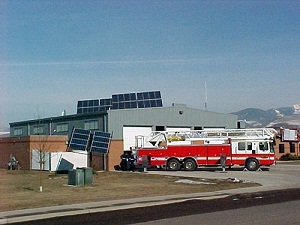Certification and permitting of PV not sexy, but saving lives
 Certifying and permitting photovoltaics isn’t the flashy part of renewable energy, but they’re imperative on making sure that installations are safe for consumers and performing to expectations.
Certifying and permitting photovoltaics isn’t the flashy part of renewable energy, but they’re imperative on making sure that installations are safe for consumers and performing to expectations.
After all, without proper precautions, a PV module can shock or even kill a person if not properly mounted.
“Without minimum safety standards and without enforcement of those standards by local permitting departments and utility interconnection staff, people could get electrocuted or hurt in fires,” said Mignon Marks, executive director of the California Solar Energy Industries Association (CalSEI), during the recent Inverter and PV System Technology Forum in San Francisco. “This topic is also critical to the life and long-term health of our industry—for without testing and certification investors and consumers wouldn't know what to expect in terms of performance and reliability.”
One of the biggest safety issues with PV at this point is there’s currently no way to de-energize PV modules at the module level. They can be turned off at the inverter, in case there’s a fire, but the panels will continue generating electricity, even if they’re on fire, posing a shock hazard for people and firefighters.
“In 2011,there were two fires in large rooftop systems, and they both were traced back to ground faults. The problem was these ground faults went undetected over time,” said John Berdner, general manager of SolarEdge in North America. “The first ground fault and secondary ground fault caused hyper-flow resulting in fires. In both cases the emergency personnel and firefighters had difficulty shutting down the systems, and that was a big challenge to identify, and the first responders were close to electrical hazard.”
UL has done some research into ways to de-energize PV systems in the event of an emergency, according to Berdner. But there’s no answer yet. Voltage hazards are one of the chief issues that need to be addressed.
“Because you cannot turn off PV from the inverter,” he said.
But things are changing.
At this point there are efforts underway to make sure that an array can automatically be shut down. Under a new proposal, to the National Electric Code (NEC) arrays would have to shut down all conductors automatically within 10 seconds of an emergency, reducing voltage to 80 volts.
“The automatic shutdown of array: In my opinion this is probably the most significant change being proposed and both firefighters, and UL are in strong support of this,” Berdner said. “And that in my experience makes it a virtual certainty that this will be a new requirement.”
This could also be a global standard, Berdner said.
“There's a big effort going on to harmonize with international standards,” he said, “so that manufacturers can build one product for the global market, which helps reduce costs and gets some people involved in the manufacturing process.”
That would help reduce the overall cost for manufacturers of implementing such changes while making PV modules safer.



